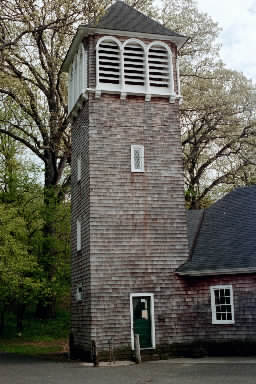 The bell tower is attached to the corner of what was once a stable and is
now used for boat storage, offices and beach lockers.
Although it contains a clock, this is not a "clock tower", because it has no clock dials.
The clock room (pictured at right) is located on the second level of the tower;
the third is empty except for pulley racks
which redirect the chime and hour-strike actions to align with the drop hammers.
The bell tower is attached to the corner of what was once a stable and is
now used for boat storage, offices and beach lockers.
Although it contains a clock, this is not a "clock tower", because it has no clock dials.
The clock room (pictured at right) is located on the second level of the tower;
the third is empty except for pulley racks
which redirect the chime and hour-strike actions to align with the drop hammers.
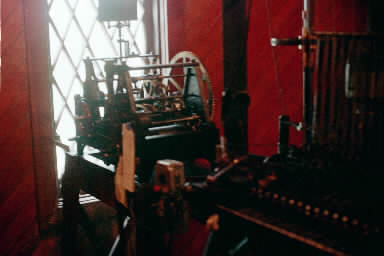
The front side of the two-train clock is at left; the chiming machine is at right. The clock is driven by a one-second pendulum; it turns no dials (except its own indicator), but simply strikes the hours (on the bass bell) and trips the chiming machine.
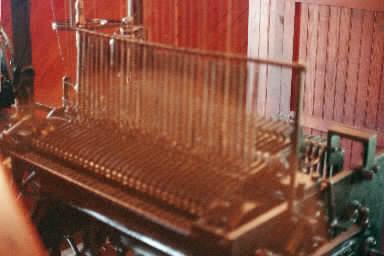
The chiming machine has 30 levers - two per bell. The interchangeable tune drums are inserted and removed from this side; one is in place and partly visible below the levers.
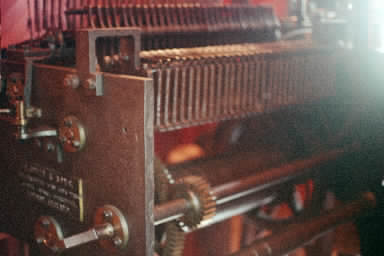
On the end of the chiming machine, at left, can be seen the manufacturer's name plate. Inside the machine is the empty drum to which a cable and weight once supplied driving power.
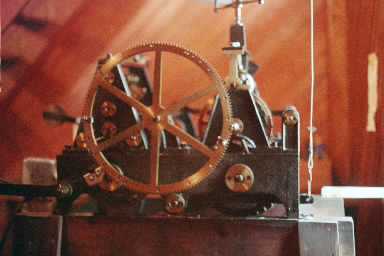
The back side of the clock has a large wheel which trips the chiming machine at selectable times (currently twice each day). Just outside the right edge of the clock frame is the trip wire for the hour strike; its governor fan is a partly visible at the top of the photo.
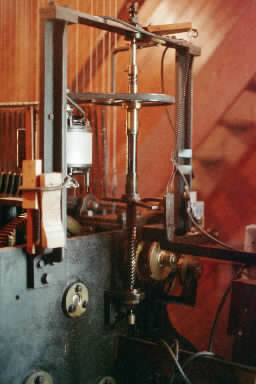 On the opposite end of the chiming machine (relative to the photo above) is a vertical shaft
which once carried the regulator fan (when this machine was driven by a falling weight).
Now it carries a pulley through which an electric motor (the small white cylinder at left)
drives the machine.
On the opposite end of the chiming machine (relative to the photo above) is a vertical shaft
which once carried the regulator fan (when this machine was driven by a falling weight).
Now it carries a pulley through which an electric motor (the small white cylinder at left)
drives the machine.
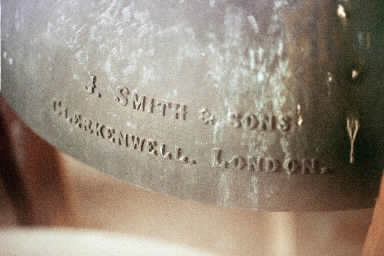
The bass bell (above) and treble bell (at right) bear the clockmaker's inscription: "J. Smith & Sons / Clerkenwell, London." The 13 intervening bells are blank.
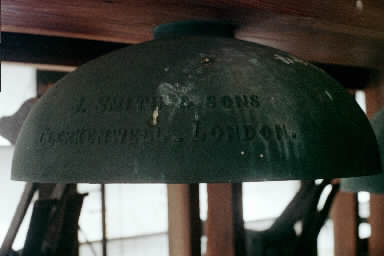
The bells have short necks, and each is attached to the timber frame with a single bolt. The chiming hammers are standard drop-type clock hammers with spring rests.